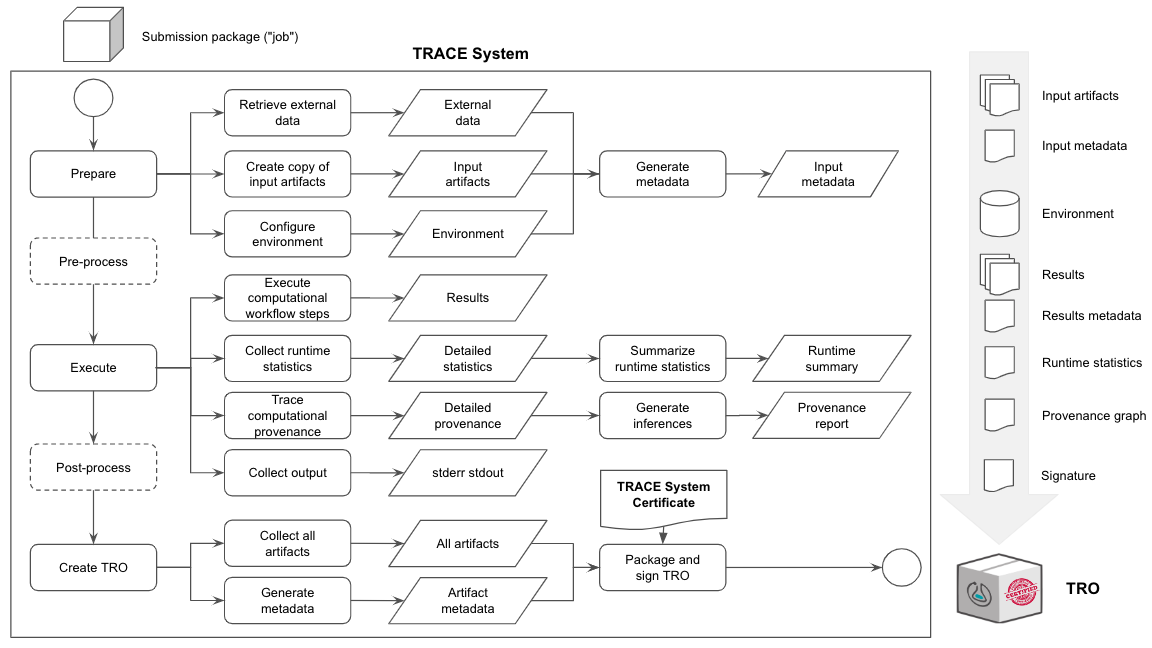TRACE Elements#
The TRACE project is developing a set of infrastructure elements that can be used by system owners to:
declare the dimensions of computational transparency supported by their platform;
certify that a specific computational workflow was executed on the platform; and
bundle artifacts along records of their execution and certify them for dissemination.
TRACE will result in a specification as well as a reference software implementation based on the conceptual model described here.

Fig. 1 TRACE System Overview#
At the core of the TRACE model is the Transparency-Certified System or TRACE System. TRACE systems are responsible for the execution of computational workflows on behalf of researchers where guaranteeing the transparency of results is important. TRACE system owners maintain a structured document, the TRACE System Certificate, that specifies how transparency is supported by the system and a signing key associated with the certificate. TRACE systems execute computational workflows, possibly collecting runtime and computational provenance information, and produce a Transparent Research Object (TRO). TROs are a collection of computational artifacts (inputs, outputs, code, environment) along with records of their execution with the system, signed by the system within which they were executed.
Transparency-Certified System (TRACE System)#
A TRACE system is any structured process that can be used to generate a TRO including a specific computational platform; a special queue on a job scheduling system; or a person-centric documented workflow. The purpose of the TRACE system is to certify that a computational workflow was executed and to communicate details about how the system ensures the transparency of results.
TRACE System Certificate#
A TRACE System Certificate is a structured document that describes how TROs are produced by a TRACE System and how the system ensures results transparency and reproducibility. It includes the following information:
Assertions about supported transparency levels and features (see transparency questions).
Links to relevant versions of organizational policy and workflow documentation.
Public key of a digital signature used to sign TROs.
Transparency-Certified Research Objects (TRO)#
TRACE Systems produce Transparency-Certified Research Objects (TROs) which can be used for dissemination and review.
A TRO is an aggregation of computational research artifacts, records of their execution within a particular system, technical metadata about their contents, digitally signed by the system within which they are executed. The central purpose of a TRO is to provide a trustworthy record of computations used to obtain results, eliminating the need for verification through repeating computations. TROs are produced by TRACE Systems and may be consumed by other researchers, replicators, or reviewers. The TRO will be signed by the system owner using a digital signature. The integrity of the TRO can be verified using the affixed signature.
Digital signature#
A TRACE system owner maintains a signing key or certificate used to digitally sign TROs created by the system. The signature can be used to verify that a TRO was generated by a specific TRACE system. See the Signing for a technical discussion of implementation options.
